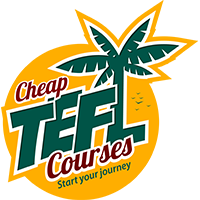![[object Object]](https://www.cheapteflcourses.com/wp-content/uploads/2025/10/1326946.jpg)
Every EFL teacher knows the beautiful, complex reality of the classroom: no two students learn at the same pace. You’ve crafted the perfect lesson, but a quick glance around the room reveals a familiar scene. While most students are diligently working, a small group in the corner has already finished. They’re not just fast; they’re operating on a completely different level.
These advanced learners, often with significant exposure to English outside the classroom, present a unique opportunity. The core textbook material is essential for the majority, but for these students, it’s a review they don’t need. The challenge is to keep them engaged, challenged, and integrated—not isolated.
The “Challenge Corner”
Create a dedicated space in your classroom with tiered activities. This isn’t a separate lesson; it’s an extension.
- Grammar in Context: Instead of another worksheet, provide short, high-interest articles or blog posts. Their task is to identify and analyze specific grammar points you’re teaching the whole class.
- Vocabulary Builders: Give them advanced vocabulary lists pulled from novels appropriate for their age. Their mission is to use these new words in a short story or a presentation.
This allows them to dive deeper into the same core concepts, reinforcing their knowledge in a more sophisticated way.
Peer Teaching Power
Your advanced students are a fantastic classroom resource. Empower them by making them “Language Leaders.”
- After they complete their core work, they can circulate and help peers who are struggling.
- They can lead small-group discussions or model pronunciation for the class.
This strategy reinforces their own knowledge (the best way to learn is to teach) and builds a supportive classroom community. It turns their proficiency into a positive contribution, curbing any potential for disruptive behavior.
Project-Based Learning
For longer-term units, introduce project-based learning. This is the perfect way to seamlessly integrate advanced skills.
- Task: Instead of writing a few simple sentences, challenge them to write and illustrate a short comic book.
- Task: Have them research a topic of interest and create a slideshow presentation for the class.
- Task: Ask them to write and perform a short skit that uses the target vocabulary and grammar.
These projects allow them to practice sophisticated writing and speaking in a creative, self-directed way. They work on it in stages, during times when other students are completing foundational exercises.
Differentiate the Output, Not the Input
You can often keep the whole class on the same topic but differentiate the expected outcome.
- If the lesson is about “describing your weekend”…
- The majority of the class might write: “I played soccer. It was fun.”
- Your advanced students can be tasked with writing a detailed paragraph, using past continuous and descriptive adjectives: “While I was walking to the park, the sun was shining brightly. I met my friends for an exhilarating game of soccer that left us all exhausted but happy.”
This method ensures everyone is included in the main lesson while providing a clear, leveled challenge.
The goal is not to create a separate class. It’s about weaving in opportunities for advanced learners to soar without leaving their classmates behind. By providing purposeful challenges, you validate their skills, fuel their curiosity, and create a dynamic learning environment where every student can thrive.




